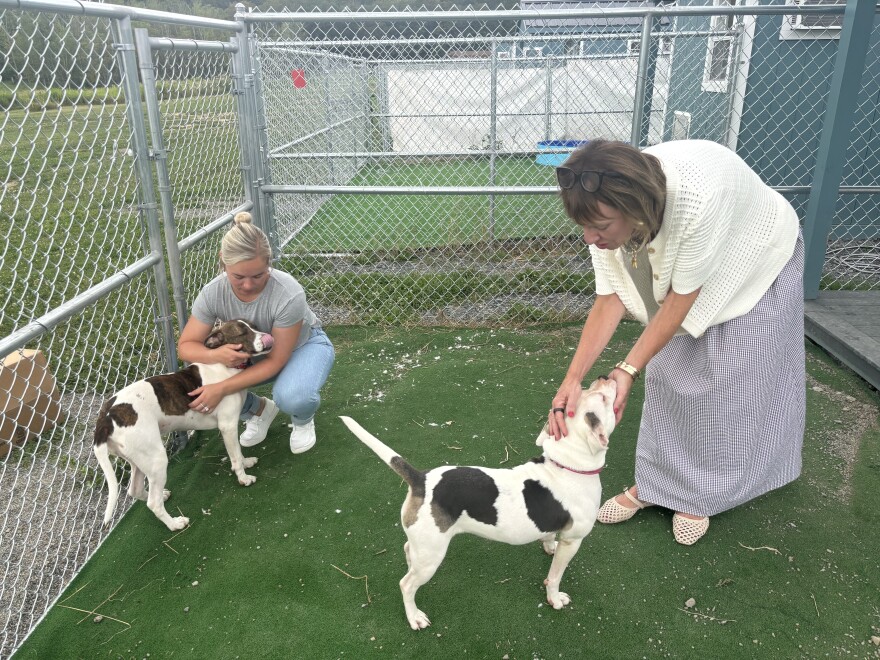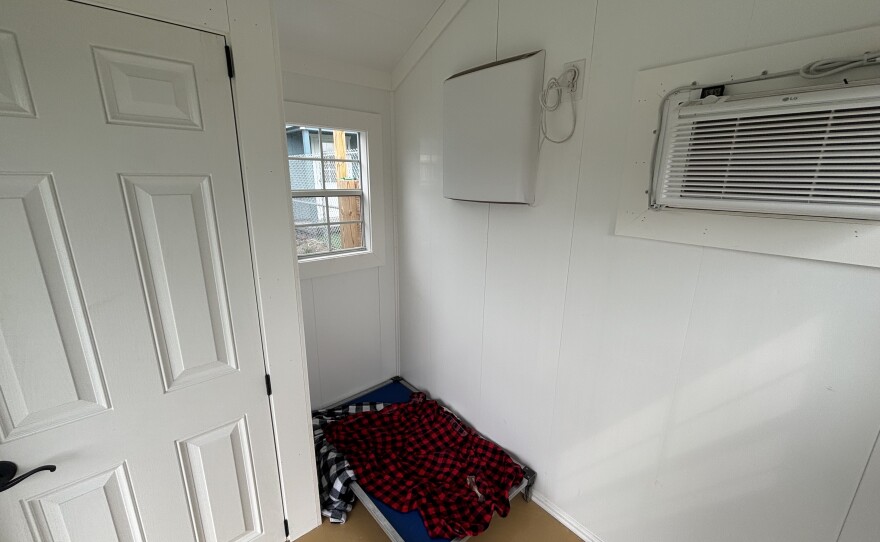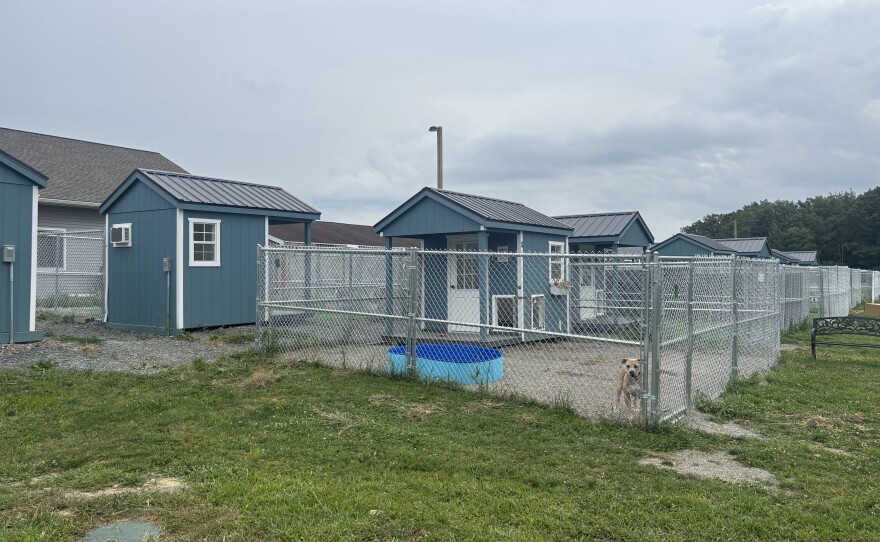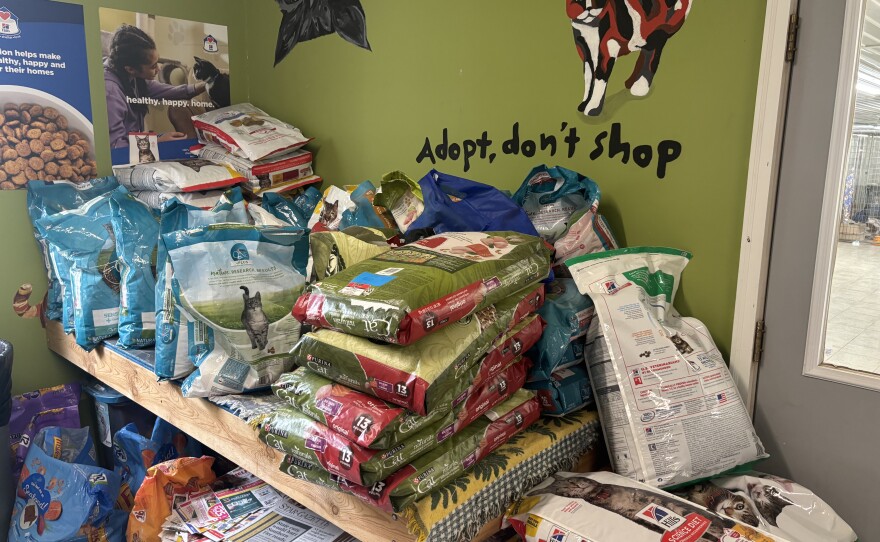The Animal Care Sanctuary’s 16 miniature houses are complete with air conditioning and heating units.
The ‘Tiny Home Village’ for dogs in East Smithfield, Bradford County officially opened on Aug. 5, and features two rows of blue ‘houses’ that can fit about two people standing.
Each house has a fenced-in yard, a doggy door and a small pool for dogs to cool off in the summer heat. Some dogs, usually the shy ones, are kept alone in the house while ones who prefer to live with a buddy are kept together.
“I am seeing that this is kind of the answer to the future of kenneling … They (dogs) need to be able to kind of come and go on their own, and they need not to be on top of each other," Executive Director Terri McKendry said.
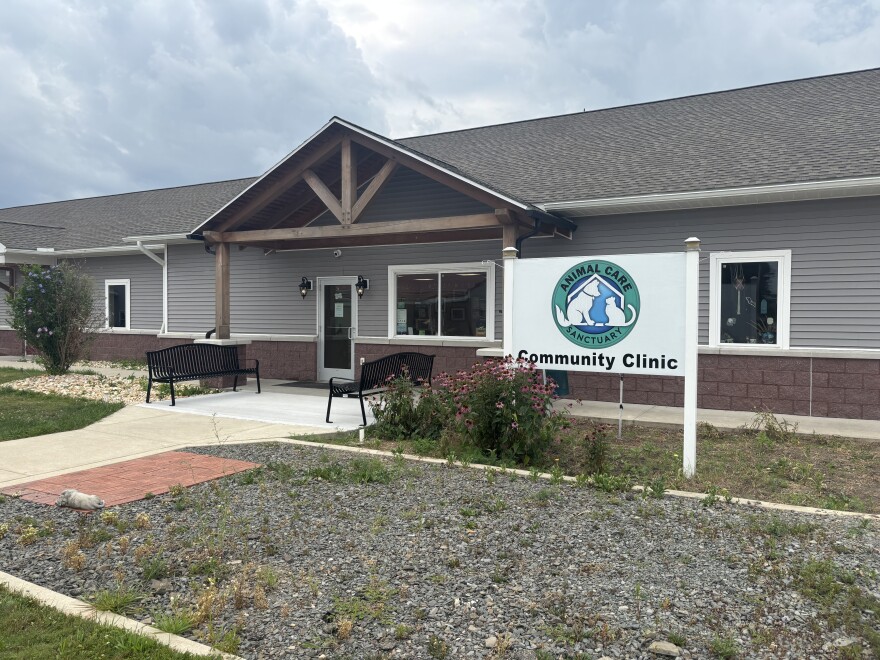
The homes reduce stress and limit the spread of diseases, McKendry said, especially as dog adoptions trend downwards as much as by 14% nationwide, according to shelter data.
“So, dogs are staying longer. And when they stay in a traditional side-by-side indoor kennel, they get what's called kennel stress … kennel stress comes out in small and or large behavior issues. So, it could be that they're leash-biting when they walk, or that they get a little bit of stranger phobia … but those keep a dog from being adopted,” McKendry said.
McKendry said potential owners may not adopt a dog with additional needs, so the shelter started to look into ways to cut down on kennel stress.
Through data collected with other shelters, and databases from Best Friends and Maddie’s Fund, McKendry said the sanctuary’s found shelter animals do best when they have their own space.
For her research, McKendry said she traveled to Safe Haven Rescue Kennel in Nevada who housed feral dogs in small homes. She said she was “struck by how calm” the animals were. Instead of non-stop barking and jumping all over the place, the dogs were relaxed and seemed comfortable in their living situation.
"So, it's really just looking at the data that we have. We're collecting data on how the dogs were in the traditional kennel versus how they're changing out here. And we are seeing amazing trends,” McKendry said.
One trend of note: The Tiny Home Village went viral on social media, where it was picked up by TikTok creator, That Good News Girl. Sanctuary staff say their announcement video on the village has over 4 million views.
That attention comes as the shelter plans to build 24 more tiny homes over the next two years on its 122-acre property in Smithfield Township, of which East Smithfield is a part. Once more homes are available, the shelter plans to open a few for dog boarding services and to offer free dog boarding for veterans.
McKendry said the shelter will not get rid of its kennels, as they are helpful to quarantine new animals at the shelter.
Tiny Homes could cut down on shelter crowding
McKendry sees the sanctuary’s tiny homes as a way to combat overpopulation in shelters nationwide.
While fewer animals are entering shelters each year, the American Society for the Prevention of Cruelty to Animals (ASPCA) reports large dogs are waiting longer to be adopted than they did five years ago, which strains the “already overburdened shelter system.”
Luzerne County-based Blue Chip Animal Shelter told WVIA in a June interview that before the pandemic, shelters could get a 70-pound dog neutered for $150. Now the cost is between $700 and $800.
During a busy week in March, the shelter spent over $60,000 in veterinary costs.
McKendry said the sanctuary built its veterinary clinic about a decade ago to meet the veterinary needs of its rural Bradford County community. Smithfield Township has a population of about 1,535 people.
But McKendry said people started coming to the shelter from all around the state and New York for low-cost veterinary services.
“Our vet clinic routinely does close to 5,000 spay and neuter surgeries every year, on top of thousands of wellness visits. We host vaccine clinics. So, you would think there would be no more animals in this area that need spay and neuter, but they come from everywhere,” McKendry said.
The sanctuary also offers a pre-vet internship program for veterinary students. Each year it hosts seven or eight interns and offers on-site housing.
McKendry said the program helps alleviate the veterinary shortage and attracts promising vets to shelter medicine.
“Most vets that are in school are going into private practice … There's more money in private practice … When you are in shelter medicine, it's a whole different can of worms … You're on call a lot [and] you see a lot more abuse cases,” she said.
Pennsylvania’s animal cruelty laws stronger than in some states, but gaps remain
The Atlanta native said the shelter takes in animals from around the country, mostly from the South, predominantly Texas, and California.
While Pennsylvania shelters struggle to accommodate new intakes, McKendry said shelters in the southern parts of the country arguably are in worse shape: Dog laws in Pennsylvania, while imperfect, provide greater protections against animal cruelty than do laws in other states.
“In the Northeast, we have a lot of dog laws that help us cut down on the amount of stray animals, but the south and the west are overpopulated with dogs running down the street. So, shelters there are doing their best, but they're inundated. They might have 200 dogs come in in one day, and no one has the kind of space for that,” McKendry said.
She did not talk about laws to protect cats in Pennsylvania, where felines receive less protection.
The state has laws against neglect, bodily harm and torture, tethering an unattended dog outside for more than nine hours at a time and animal fighting, but less protections for cats. For example, it is prohibited by law to declaw a dog in Pennsylvania, but there are no statewide laws against declawing cats.
While the sanctuary built its tiny homes to improve living conditions for its dogs, the facility has indoor and outdoor spaces for its 100-plus cats to roam with supervision.
Animal Care Sanctuary’s needs from the community
McKendry said the sanctuary is always looking for donations towards its new tiny homes and food donations. The sanctuary also accepts old bedding, as it uses it to pad its kennels.
The sanctuary also is in the middle of a “Foster 50 Challenge.” McKendry said they are looking to find 50 new people to foster for them.
“Even getting the dogs out for a month, or a week, or a couple of days, that also helps with kennel stress and it tells us more about the dogs. Dogs are very different in a home than they are in a kennel setting …Their personalities really come out … that gives us more data about the dog for potential adopters,” McKendry said.
For more information on Animal Care Sanctuary, visit its website.

